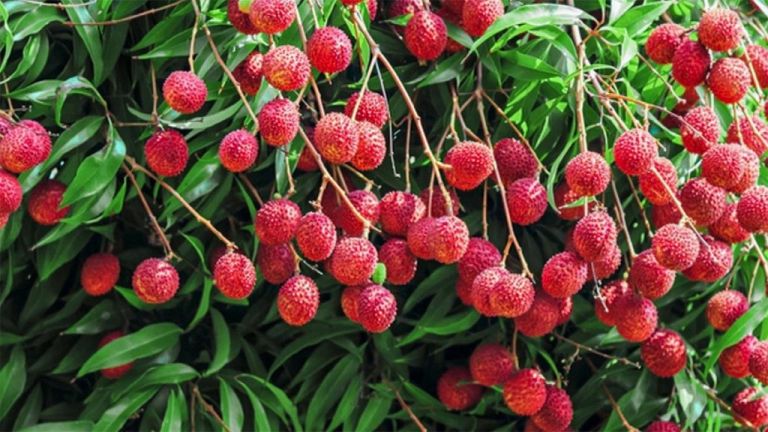
Post-Harvest Litchi Tree Care
Proper care of litchi trees after harvest is crucial for their productivity in the subsequent year. To ensure the tree flowers and bears fruit in the next season, you must prune the tree and apply fertilizers promptly.
Harvest-Time Pruning
Harvesting the fruit is a form of pruning as the entire fruit panicles are removed from the tree. During harvest, you should cut off 25 to 30 cm of the fruit-bearing shoots alongside the panicle. This promotes a compact canopy, encouraging the growth of two to three new shoots that will flower and bear fruit in the next season. After harvest, remove any remaining panicles, twigs, weak, diseased, dead, or damaged shoots. This allows sunlight to penetrate the tree canopy and facilitates the application of crop protectants.
Avoid Over-Pruning
Over-pruning or removing too many leaves and wood with the fruit panicles at harvest can reduce flowering in the next season or even lead to biennial bearing. Therefore, it’s important to avoid severe pruning.
Fertilising Pruned Trees
After harvest and pruning, apply fertilizers immediately. The amount of fertilizer to apply depends on the tree’s age and canopy size. Apply the fertilizer during dry and hot conditions and water the tree immediately afterward.
Tree Rejuvenation
Rejuvenation, or renewal, is a technique for restoring the production potential of existing old litchi plantations. It helps reduce the tree height, shape the tree canopy architecture, and promote branching. Old litchi trees (above 50 years old) that are not regularly pruned often grow tall with a dense canopy. These trees are less productive, prone to bat attack, and difficult to harvest.
Reviving Partially Productive Trees
For partially productive litchi trees, gradually head back to the tree’s main limbs over two to three years. Prune back the tallest limb to a height of 1.5 m, promoting shoot formation at the pruning point. After three months, keep only three to four best-positioned shoots and eliminate the others. The following year, prune back the second tallest limb. Again, numerous branches will shoot out. Keep three to four well-spaced branches and eliminate the rest. In the third year, prune back the remaining limbs and keep three to four emerging shoots.
Reviving Non-Productive Trees
If the tree is not productive, head back the main trunk to a height of 1.0 to 1.5 m. After pruning, protect all cut surfaces with a tree wound dressing or a lead-free oil-based paint. If the tree is completely headed back, protect the exposed barks against sunburn by painting them with white water-based paint diluted with water in a 1:1 to 1:4 ratio depending on its fluidity.
Post-Rejuvenation Care
After tree rejuvenation, apply 3 kg of Sulphate of Ammonia and 2 kg of 13:13:20:2 per tree. Irrigate the tree generously to prevent water stress. Consistently remove excess new shoots to guarantee the proper placement of branches.


